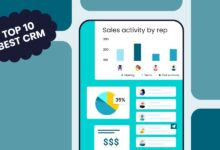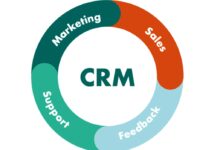B2B Prime: 7 Ultimate Secrets to Skyrocket Your Business Growth
Welcome to the ultimate guide on B2B Prime—your go-to resource for unlocking explosive growth, smarter partnerships, and next-level efficiency in the B2B landscape. If you’re serious about scaling, this is where it starts.
What Exactly Is B2B Prime?

The term B2B Prime has been gaining momentum across enterprise circles, but what does it truly mean? At its core, B2B Prime refers to a premium-tier approach to business-to-business operations that emphasizes speed, reliability, data intelligence, and customer-centric service delivery. It’s not just a product or platform—it’s a strategic mindset designed to elevate how companies engage, transact, and grow together.
Defining the B2B Prime Concept
B2B Prime isn’t an official product name from a single corporation like Amazon Prime, but rather an emerging industry concept inspired by the success of consumer-focused premium services. It represents a shift toward offering accelerated procurement, dedicated support, predictive analytics, and priority access in B2B ecosystems. Think of it as Amazon Prime’s corporate cousin—built for enterprises, not individuals.
- B2B Prime focuses on reducing friction in long sales cycles.
- It integrates automation, AI, and real-time data for faster decision-making.
- The model enhances trust and loyalty between business partners.
How B2B Prime Differs from Traditional B2B Models
Traditional B2B transactions are often bogged down by manual processes, delayed approvals, and fragmented communication. B2B Prime disrupts this with a streamlined, subscription-based or tiered service model that prioritizes speed and predictability.
“B2B Prime isn’t about selling more—it’s about delivering better. It’s the evolution of B2B from transactional to relational at scale.” — Industry Analyst, Gartner
Unlike legacy systems that rely on RFQs (Request for Quotation) and weeks-long negotiations, B2B Prime platforms offer instant pricing, automated contract renewals, and AI-driven recommendations—similar to how Netflix suggests content, but for industrial supplies or SaaS tools.
The Evolution of B2B Commerce: From Catalogs to B2B Prime
To appreciate the rise of B2B Prime, we need to trace the evolution of B2B commerce. What began as paper catalogs and phone orders has transformed into digital marketplaces, e-procurement systems, and now, intelligent, personalized platforms.
From Paper to PDF: The Digital Shift
In the 1990s, B2B transactions were largely analog. Sales reps mailed product catalogs, and purchase orders were faxed. The arrival of the internet changed everything. Companies began digitizing catalogs, creating basic websites, and using email for order confirmations.
This phase laid the groundwork for e-commerce in B2B, but it was still slow and inefficient. The real breakthrough came with ERP integrations and e-procurement tools like Ariba and Coupa, which automated purchasing workflows.
Rise of E-Marketplaces and Integrated Platforms
The 2010s saw the emergence of B2B e-marketplaces such as Alibaba, ThomasNet, and Amazon Business. These platforms allowed businesses to search, compare, and buy products with unprecedented ease. However, they lacked personalization and speed—two elements that B2B Prime aims to solve.
- Amazon Business reported over $30 billion in annual sales by 2023, proving the demand for frictionless B2B buying.
- Platforms began adopting AI to recommend products based on past purchases and industry trends.
- Integration with accounting and inventory systems became standard.
Still, many companies struggled with inconsistent delivery times, poor customer service, and lack of dedicated support—gaps that B2B Prime directly addresses.
B2B Prime vs. Amazon Business: What’s the Difference?
It’s easy to confuse B2B Prime with Amazon Business, but they are not the same. While Amazon Business is a tangible platform, B2B Prime is a broader strategic framework that can be implemented across various vendors and industries.
Amazon Business: A Pioneer in B2B E-Commerce
Amazon Business launched in 2015 as a dedicated arm of Amazon for business buyers. It offers business pricing, tax-exempt shopping, and integration with procurement systems. It also introduced Business Prime, a subscription service that provides free two-day shipping, business-only deals, and spending insights.
You can explore Amazon Business features here: Amazon Business Official Site.
How B2B Prime Expands Beyond Amazon
B2B Prime takes the best elements of Amazon Business—speed, reliability, data—and applies them across multiple platforms and private networks. For example:
- A manufacturer might offer B2B Prime-tier clients early access to new products.
- A SaaS provider could give priority onboarding and 24/7 support to Prime members.
- Distributors may guarantee same-day shipping and dynamic pricing for subscribed partners.
In essence, B2B Prime is not tied to one marketplace. It’s a service-level agreement (SLA) model that can be adopted by any B2B company aiming to deliver premium experiences.
Core Features of a True B2B Prime Experience
Not every fast B2B service qualifies as B2B Prime. To be considered a genuine B2B Prime offering, a platform or vendor must deliver on several key features that redefine business expectations.
1. Priority Fulfillment & Guaranteed Delivery
One of the hallmarks of B2B Prime is guaranteed, accelerated delivery. Whether it’s physical goods or digital services, Prime-tier clients expect faster turnaround times. This often means:
- Same-day or next-day shipping for critical supplies.
- SLA-backed delivery commitments with penalties for delays.
- Real-time shipment tracking with predictive delay alerts.
For example, industrial suppliers like Grainger offer “Rush Delivery” options, but B2B Prime would make this the default for subscribed partners.
2. Dedicated Account Management & 24/7 Support
B2B Prime isn’t just about speed—it’s about relationship depth. Prime members get access to dedicated account managers, technical support teams, and even AI-powered chatbots trained on their specific business needs.
“Our B2B Prime clients have a single point of contact who knows their inventory levels, reorder cycles, and pain points. That’s the difference.” — CEO, SupplyChainX
This level of service reduces onboarding time, speeds up issue resolution, and increases customer lifetime value.
3. Predictive Analytics & Smart Reordering
True B2B Prime systems use AI to anticipate needs. By analyzing historical data, seasonality, and market trends, these platforms can automatically suggest reorders, adjust pricing, and even warn of supply chain disruptions.
- AI-driven dashboards show inventory burn rates and forecast demand.
- Smart contracts trigger reorders when stock hits a threshold.
- Integration with ERP systems ensures seamless data flow.
Companies like SAP and Oracle are already embedding these capabilities into their B2B solutions, paving the way for Prime-tier automation.
Industries That Benefit Most from B2B Prime
While B2B Prime can be applied across sectors, certain industries stand to gain the most due to their complex supply chains, high transaction volumes, or critical time sensitivity.
Manufacturing & Industrial Supply
Manufacturers rely on just-in-time inventory systems. A delay in receiving a component can halt an entire production line. B2B Prime ensures that critical parts are delivered on time, every time.
- Priority access to high-demand components.
- Vendor-managed inventory (VMI) with real-time updates.
- Integration with MES (Manufacturing Execution Systems).
For example, a car manufacturer using B2B Prime could receive automatic alerts when brake pad supplies are low and have them shipped overnight from a trusted supplier.
Healthcare & Medical Equipment
In healthcare, delays can be life-threatening. Hospitals and clinics need reliable access to medical devices, PPE, and pharmaceuticals. B2B Prime offers:
- Guaranteed delivery of critical supplies.
- Compliance tracking for FDA and HIPAA regulations.
- Dedicated reps for emergency orders.
During the pandemic, companies like McKesson and Medline used Prime-like models to prioritize vaccine distribution and PPE delivery to frontline providers.
Technology & SaaS Providers
SaaS companies are increasingly adopting B2B Prime principles for enterprise clients. This includes:
- Priority onboarding and implementation.
- Enhanced SLAs with uptime guarantees (e.g., 99.99%).
- Exclusive access to beta features and roadmap previews.
For instance, Salesforce offers “Success Cloud” and dedicated customer success managers—essentially a B2B Prime experience for top-tier clients.
How to Implement B2B Prime in Your Business
Adopting a B2B Prime model isn’t just about technology—it’s a strategic shift that requires alignment across sales, operations, IT, and customer service.
Step 1: Assess Your Current B2B Operations
Begin by auditing your existing processes. Where are the bottlenecks? How long does it take to fulfill an order? What’s your customer support response time?
- Map out the entire customer journey from inquiry to delivery.
- Identify pain points: slow approvals, manual invoicing, poor tracking.
- Survey your top clients on what they value most.
This baseline assessment will help you prioritize which Prime features to implement first.
Step 2: Build a Tiered Service Model
Not all customers need (or will pay for) B2B Prime. Create tiers—Standard, Premium, and Prime—to segment your offerings.
- Standard: Basic ordering, standard shipping, email support.
- Premium: Faster shipping, phone support, basic analytics.
- Prime: Guaranteed delivery, dedicated manager, AI insights, early access.
Pricing can be subscription-based, transaction-fee-based, or bundled with product purchases.
Step 3: Integrate Technology for Automation
Technology is the backbone of B2B Prime. You’ll need:
- CRM and ERP integration (e.g., Salesforce, NetSuite).
- AI-powered analytics tools (e.g., Tableau, Power BI).
- e-Procurement platforms with API connectivity.
Consider partnering with platforms like Procurify or Workday to automate purchasing and approvals.
The Future of B2B Prime: Trends to Watch
B2B Prime is still evolving, but several trends are shaping its future. Companies that stay ahead of these shifts will dominate their markets.
AI-Powered Procurement Assistants
Imagine a virtual procurement officer that learns your buying patterns, negotiates pricing, and places orders autonomously. AI assistants are already being tested by companies like IBM and Google Cloud.
- These bots can compare supplier prices in real time.
- They can flag contract renewals and suggest alternatives.
- They reduce human error and free up procurement teams for strategic work.
Blockchain for Transparent Supply Chains
Blockchain technology can verify the authenticity, origin, and delivery status of goods. In a B2B Prime model, this ensures trust and compliance—especially in regulated industries.
- Each transaction is recorded on an immutable ledger.
- Smart contracts automatically release payments upon delivery confirmation.
- Reduces fraud and disputes in cross-border transactions.
Companies like Maersk and IBM have already launched blockchain-based trade networks like TradeLens.
Subscription-Based B2B Models
Just as consumers subscribe to Netflix or Spotify, businesses are moving toward subscription-based B2B services. This includes:
- Monthly access to software, equipment, or raw materials.
- Flat-rate pricing with unlimited support.
- Flexible scaling up or down based on demand.
This model aligns perfectly with B2B Prime, offering predictability for both buyer and seller.
Challenges and Risks of B2B Prime Adoption
While B2B Prime offers immense benefits, it’s not without challenges. Companies must navigate cost, complexity, and customer expectations carefully.
High Implementation Costs
Building a B2B Prime system requires investment in technology, training, and infrastructure. Small and mid-sized businesses may struggle to afford:
- AI and analytics platforms.
- Dedicated support teams.
- Guaranteed shipping networks.
Solution: Start small. Offer Prime features to your top 10% of clients first, then scale.
Customer Expectation Inflation
Once clients experience B2B Prime, they may expect the same level of service from all vendors. This can create pressure to over-deliver or risk churn.
“The danger of B2B Prime is setting a standard you can’t maintain. Consistency is key.” — Supply Chain Consultant, Deloitte
Manage expectations with clear SLAs and tiered service agreements.
Data Privacy and Security Risks
B2B Prime relies on deep data integration. Sharing inventory levels, financial data, and operational metrics increases exposure to cyber threats.
- Ensure compliance with GDPR, CCPA, and industry-specific regulations.
- Use end-to-end encryption and multi-factor authentication.
- Conduct regular security audits.
Partner with cybersecurity firms like Palo Alto Networks or CrowdStrike to protect your ecosystem.
Success Stories: Companies Mastering B2B Prime
Several companies are already reaping the rewards of B2B Prime strategies. Let’s look at real-world examples.
Case Study 1: Siemens’ Digital Procurement Network
Siemens transformed its B2B operations by launching a digital marketplace for industrial parts. Key Prime features include:
- AI-driven recommendations based on machine usage.
- Same-day shipping for critical components.
- Integration with customer maintenance systems.
Result: 30% faster order fulfillment and a 25% increase in customer retention.
Case Study 2: Shopify Plus for B2B Brands
Shopify expanded into B2B with Shopify Plus, offering wholesale portals, bulk pricing, and automated ordering. By adding Prime-like features—such as priority support and custom API integrations—they’ve attracted enterprise clients like Gymshark and Heineken.
- Dedicated onboarding specialists.
- 99.9% uptime guarantee.
- Custom workflows for complex B2B transactions.
Learn more at Shopify Plus Official Site.
Case Study 3: Microsoft Azure for Enterprise Partners
Microsoft offers a B2B Prime-like experience through its Azure Enterprise Agreement. Top-tier partners get:
- Priority technical support.
- Custom SLAs and capacity planning.
- Early access to cloud innovations.
This has helped Microsoft maintain dominance in the enterprise cloud market.
How to Choose the Right B2B Prime Platform for Your Needs
With so many vendors claiming to offer “Prime-like” services, how do you choose the right one? Use this checklist:
1. Evaluate Delivery Speed and Reliability
Ask potential providers:
- What’s your average delivery time for critical orders?
- Do you offer guaranteed shipping with compensation for delays?
- Can you integrate with our logistics systems?
2. Assess Support and Account Management
Premium service means more than fast shipping. Look for:
- Dedicated account managers.
- 24/7 technical support.
- Proactive issue resolution (not just reactive).
3. Check for Data and AI Integration
A true B2B Prime platform should offer:
- Real-time inventory visibility.
- Predictive reorder suggestions.
- Custom dashboards with actionable insights.
Request a demo to see how the platform uses data to improve your operations.
What is B2B Prime?
B2B Prime is a premium-tier business model in B2B commerce that emphasizes speed, reliability, dedicated support, and data-driven insights to enhance the buyer experience. It’s inspired by consumer services like Amazon Prime but tailored for enterprise needs.
How does B2B Prime differ from Amazon Business?
Amazon Business is a specific e-commerce platform, while B2B Prime is a broader strategic concept that can be implemented across multiple vendors and systems. B2B Prime focuses on end-to-end service excellence, not just online ordering.
Which industries benefit most from B2B Prime?
Manufacturing, healthcare, and technology/SaaS sectors benefit the most due to their need for fast, reliable, and data-integrated supply chains and service delivery.
Can small businesses adopt B2B Prime?
Yes, small businesses can adopt B2B Prime principles selectively—such as offering priority support or fast shipping to top clients—without needing massive infrastructure. Starting with a tiered service model is key.
What are the risks of implementing B2B Prime?
Risks include high implementation costs, inflated customer expectations, and data security concerns. These can be mitigated through phased rollouts, clear SLAs, and robust cybersecurity measures.
B2B Prime is more than a trend—it’s the future of business-to-business commerce. By combining speed, intelligence, and premium service, companies can build stronger partnerships, reduce friction, and drive sustainable growth. Whether you’re a supplier, distributor, or enterprise buyer, embracing the B2B Prime mindset is no longer optional—it’s essential for staying competitive in a fast-moving digital economy.
Further Reading:





